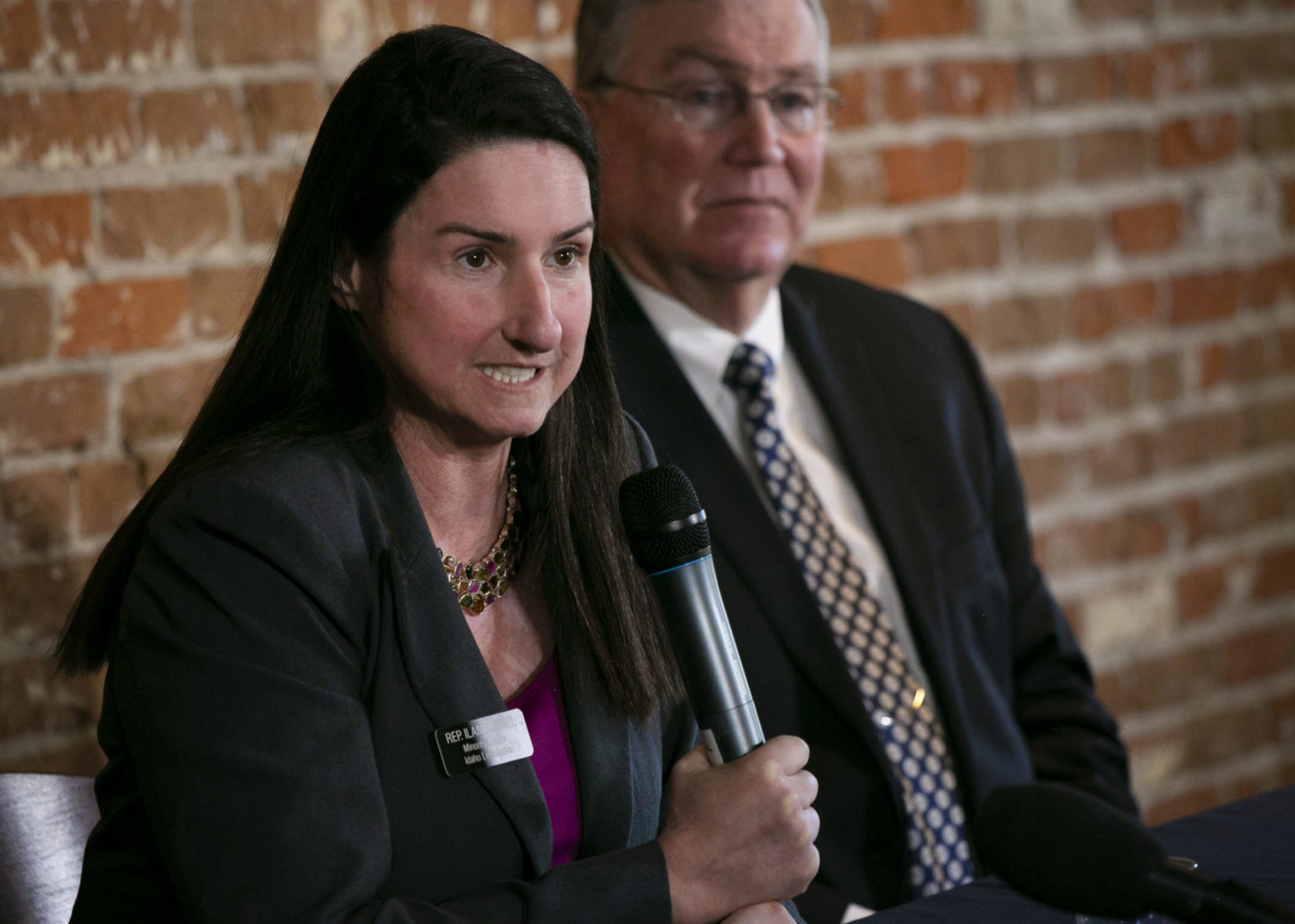
The House’s hardline conservatives have been waiting for their run at the higher education budget, and on Monday, they helped kill it.
While Monday’s vote was months in the making, it also wasn’t that straightforward. Hot-button social issues helped doom the higher ed budget bill, but that’s only part of the story. There’s a deeper, nuanced debate about how to fund Idaho’s colleges and universities this year. And for next year, and beyond, some dark economic clouds sit squarely within the line of sight.
First, let’s recap Monday.
Not surprisingly, conservatives used the budget debate as an opportunity to voice their concerns about a higher education system they consider out of control and out of touch. “We’ve gotta figure out a way to stop rubber-stamping these budgets and begin to send the message that we do have a say on what is taught and we do have a say on who they are hiring, for what purposes they are hiring,” said Rep. Vito Barbieri, R-Dalton Gardens.
Barbieri was one of the 28 House Republicans who signed a July 9 letter to Marlene Tromp, urging the new Boise State University president to disavow campus inclusion and diversity programs. Rep. Barbara Ehardt, the Idaho Falls Republican who wrote the letter, also led the debate against Monday’s budget bill.
Ultimately, 22 of the 28 co-signers voted against the budget. (Four of the other lawmakers voted for the budget: Reps. Randy Armstrong of Inkom, Bill Goesling of Moscow, Mike Kingsley of Lewiston and Thyra Stevenson of Nezperce. Rep. Kevin Andrus of Lava Hot Springs missed the vote. The other signee, former Rep. John Green of Post Falls, was expelled in January.)
So the letter accounts for 22 “no” votes. But the budget died on a 32-37 vote. Obviously, more was at play Monday. All four members of House GOP leadership voted no — including Speaker Scott Bedke of Oakley, and Caucus Chair Megan Blanksma of Hammett, who didn’t sign the Ehardt letter. None of the House Republicans on the budget-writing Joint Finance-Appropriations Committee signed the letter, but three JFAC members voted against the budget: Paul Amador of Coeur d’Alene, Wendy Horman of Idaho Falls and Scott Syme of Caldwell.
At an Idaho Press Club luncheon Tuesday, Bedke said his opposition had nothing to do with the issues raised in the Ehardt letter. Instead, he pointed out that JFAC added $1.7 million to the ill-fated higher ed budget, exceeding Gov. Brad Little’s request.
“That’s what drove my no vote, and I can’t speak to anybody else’s no vote,” Bedke said.
Bedke wasn’t the first House Republican to object to this bill’s spending increases — $707,000 to help address building maintenance, and nearly $989,000 to shield the University of Idaho, Idaho State University and Lewis-Clark State College from budget cuts resulting from flat or declining enrollment. In committee, Horman urged JFAC to hold the line, but was outvoted.
Which all sets the stage for Thursday afternoon, and a hastily arranged JFAC meeting.
Rep. Neil Anderson, R-Blackfoot, urged budget-writers to hold the line and adopt Little’s request verbatim. It never came to a vote.
Instead, JFAC went with a slightly modified version of the budget that the House killed Monday. Version 2.0 includes about a $307,000 increase for building maintenance, and leaves intact the $989,000 shock absorber for U of I, ISU and LCSC.
Add it all up, and JFAC Thursday trimmed about $500,000 from a higher ed budget that includes more than $600 million in taxpayer money and dedicated funds. That modest cut might not win over the hardliners. It might be enough to get a few House Republicans to come on board. That might be enough to pass the budget — provided the House’s 14 Democrats hold their collective noses and vote for a smaller higher education budget. (JFAC’s four Democrats voted Thursday afternoon for the higher ed budget Version 2.0, which squeaked out of committee on an 11-9 vote.)
Version 2.0 could fund Idaho’s four-year institutions for one more year — and get the Legislature one step closer to wrapping up a 2020 session that gets more trying by the day.
During Tuesday’s Idaho Press Club luncheon, House Minority Leader Ilana Rubel delivered a dire warning. While first stating the obvious — that she hopes the global coronavirus pandemic doesn’t thrust Idaho into a recession — she also said the state needs to spend strategically when times are bad. And that includes spending on higher education because, as Rubel accurately notes, enrollment increases during downturns. “A lot of people go flooding into the higher education system to try to boost those (job) credentials,” said Rubel, D-Boise.
Anderson echoed this point Thursday. Higher ed enrollments are down now. But with the Dow Jones index in freefall, and a global economy shaken by a worsening pandemic, Idaho could be opening its doors to more college and university students next fall.
“For now, I’d encourage prudence with the state’s dollars,” said Anderson, who will retire after the 2020 session.
This year, lawmakers have been haggling over a small sliver of Idaho’s higher education budget. Next year’s budget could pose an even greater challenge.
Each week, Kevin Richert writes an analysis on education policy and education politics. Look for it every Thursday.
